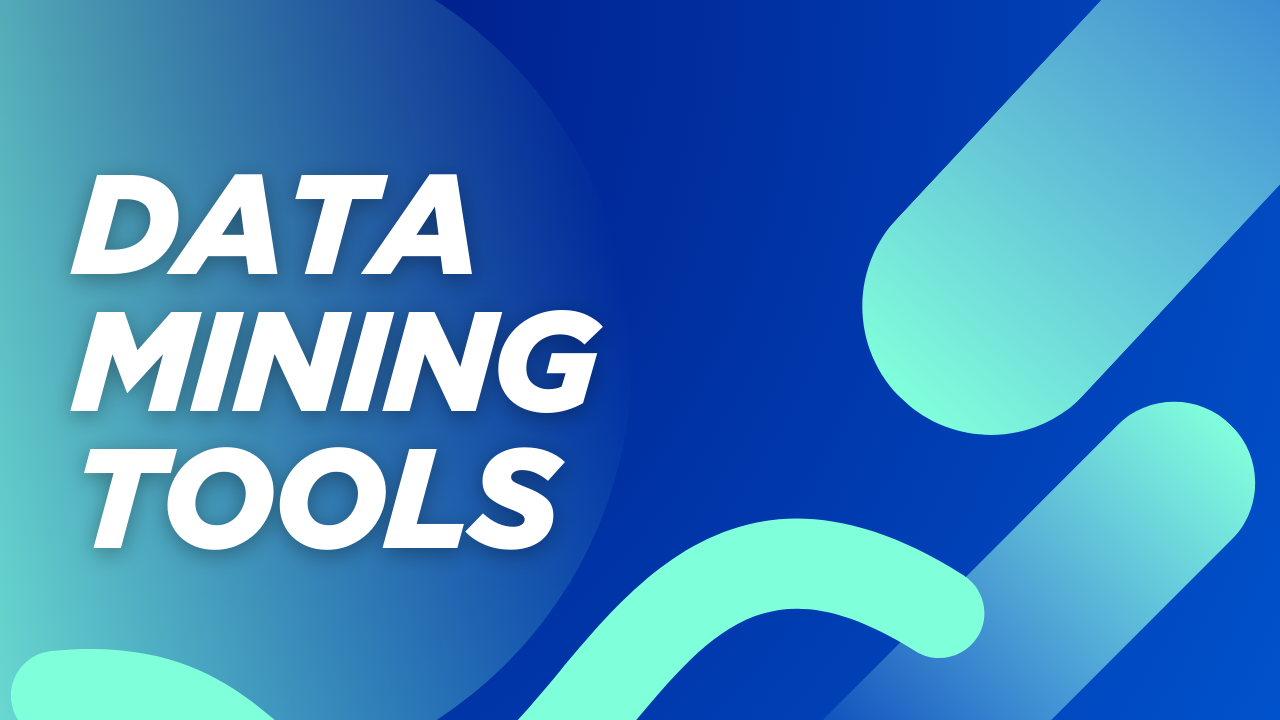In today's world, making sense of large amounts of data has become essential for business success. With the global big data market expected to hit $103 billion by 2027, using good data mining tools is no longer optional.
Data mining means looking at large sets of information to find patterns and relationships that can help businesses make better decisions. The right tools can improve your business performance, productivity, and customer relationships.
Here's my guide to the best data mining tools that can help your business in 2025.
Top 3 Data Mining tools
1. RapidMiner
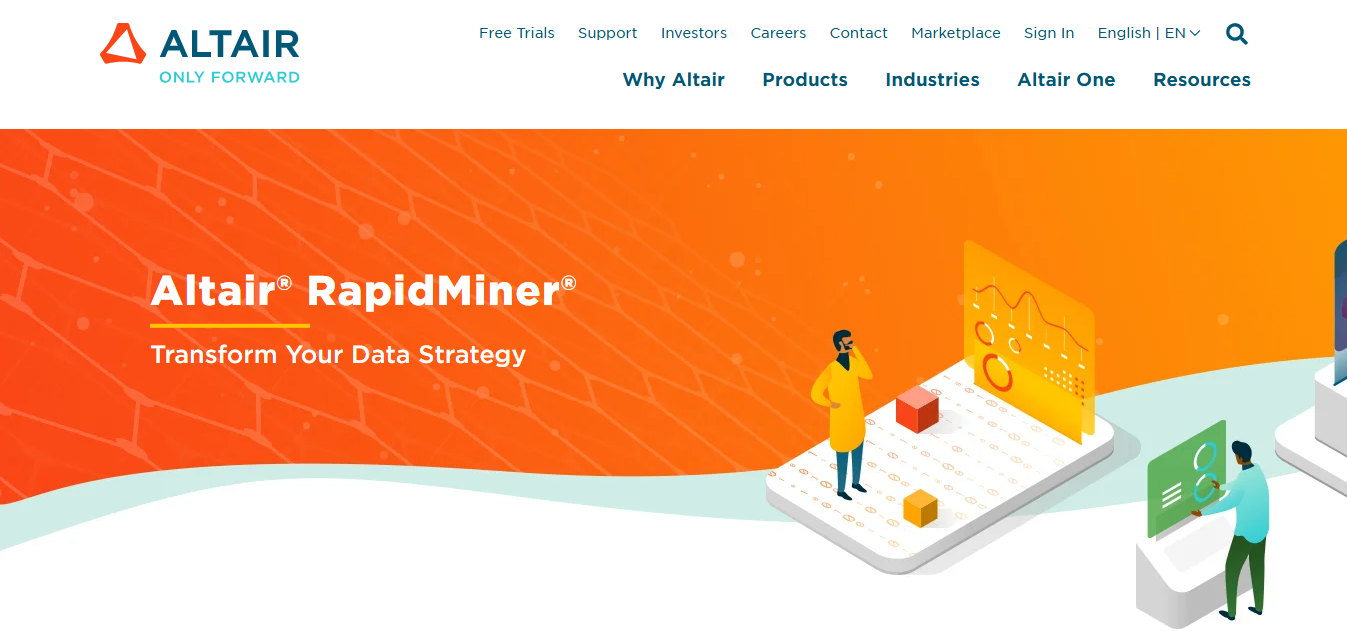
(Image Source: RapidMiner)
RapidMiner is a tool that helps you analyze data without needing to be a technical expert. Think of it as a workshop where you can drag and drop different parts to build your analysis.
RapidMiner makes it easy to look at your data, find patterns, and create models that predict future trends. It works for beginners who don't code, but also for experts who want more control.
For example, a retail company might use RapidMiner to predict which products will sell best next season based on past sales data.
Main features:
1,500+ algorithms and functions
Ready-made templates for common uses
Easy drag-and-drop interface
Three modes for different skill levels
Built-in database connections
Visual dashboards to see your data better
Pricing:
Free plan: For desktop use (10,000 data rows)
Professional: $7,500 per user monthly
Enterprise: $15,000 per user monthly
AI Hub: $54,000 per user monthly
2. SAS Enterprise Miner
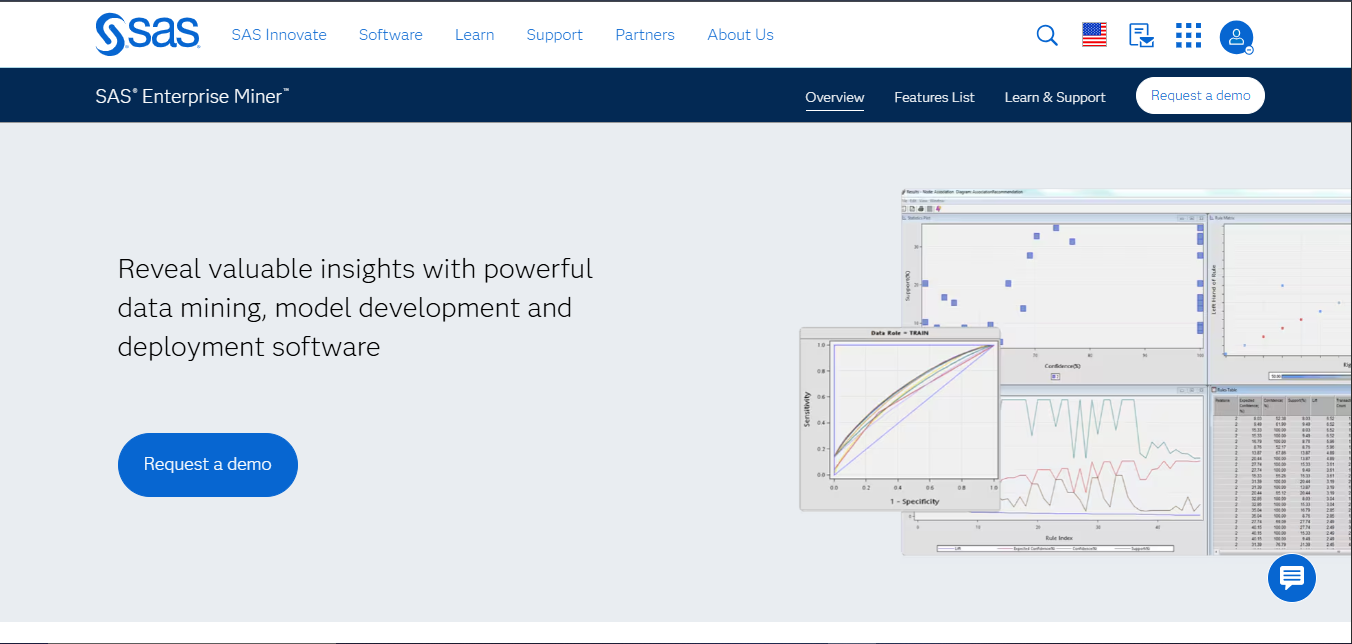
(Image Source: SAS Enterprise Miner)
SAS Enterprise Miner is like having a data detective on your team. It helps you prepare messy data, analyze it carefully, and build models that can spot important patterns.
Many companies use SAS to understand customer behavior, detect fraud, or improve their marketing. It's known for being reliable and having excellent customer support.
A bank might use SAS to identify which customers are likely to be interested in a new loan product based on their previous banking habits.
Main features:
Easy-to-use graphic interface
Dynamic charts and graphs
Option to add custom tools
Server-based processing
Automatic model creation
Works with open-source R
Pricing:
Free trial available
Base license: $1,695 per year
Extra licenses: $1,295 per year
Remote access: $495 per year
Basic support: $995-$1,495 per year
3. Zoho Analytics
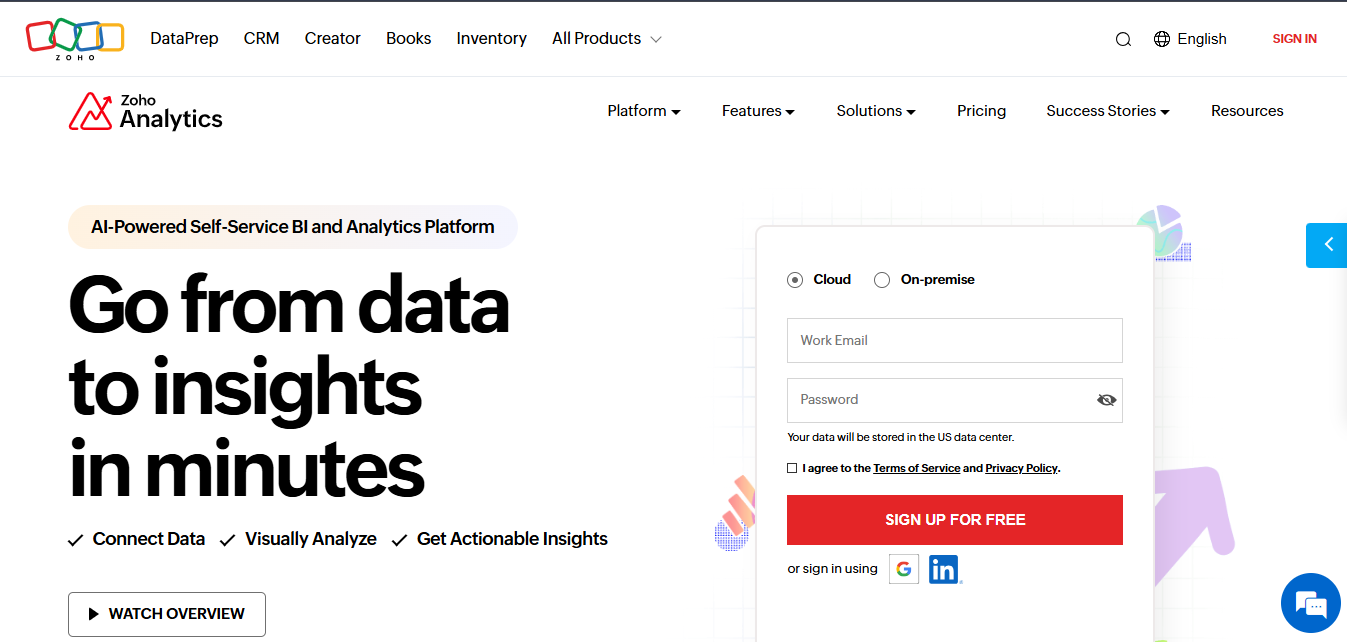
(Image Source: Zoho Analytics)
Zoho Analytics turns complicated data into clear insights without requiring technical knowledge. It's like having a translator that turns numbers into stories about your business.
Zoho is especially good for small and medium businesses because it costs less than many alternatives but still offers powerful features. It can connect to many different data sources and create beautiful visual reports.
A marketing team might use Zoho to track campaign performance across different channels and understand which efforts bring the most value.
Main features:
Simple drag-and-drop interface
Works with data from 250+ sources
250+ ways to reshape your data
Map-based visualization
AI assistant for smart suggestions
Control who sees what in your data
Pricing:
Free plan: Unlimited reports for 2 users
Basic: $22 per month
Standard: $45 per month
Premium: $112 per month
Enterprise: $445 per month
Other Best Data Mining tools
If our top picks don't work for you, check out these alternatives:
Oracle Data Miner
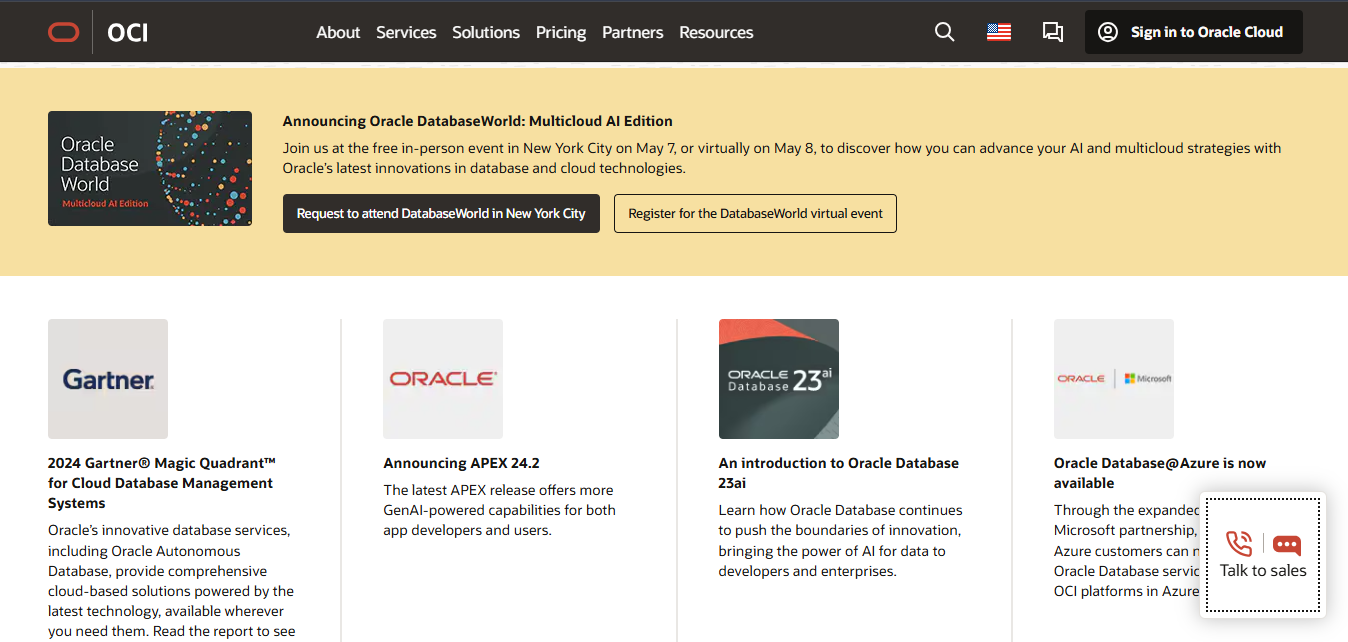
(Image Source: Oracle Data Miner)
Oracle Data Miner works like an extension to Oracle's database tools. It helps businesses dig deeper into their data to find valuable insights.
Oracle Data Miner excels at finding patterns in customer behavior, creating customer segments, and spotting unusual data that might indicate problems or opportunities.
For instance, an online store might use Oracle Data Miner to group customers into different segments based on buying habits, then create tailored marketing for each group.
Main features:
Visual modeling environment
Works well with Oracle Database
Workflow tools for deploying models
Documentation for sharing methods
Creates SQL scripts
Pricing: Contact Oracle for details
IBM SPSS Modeler
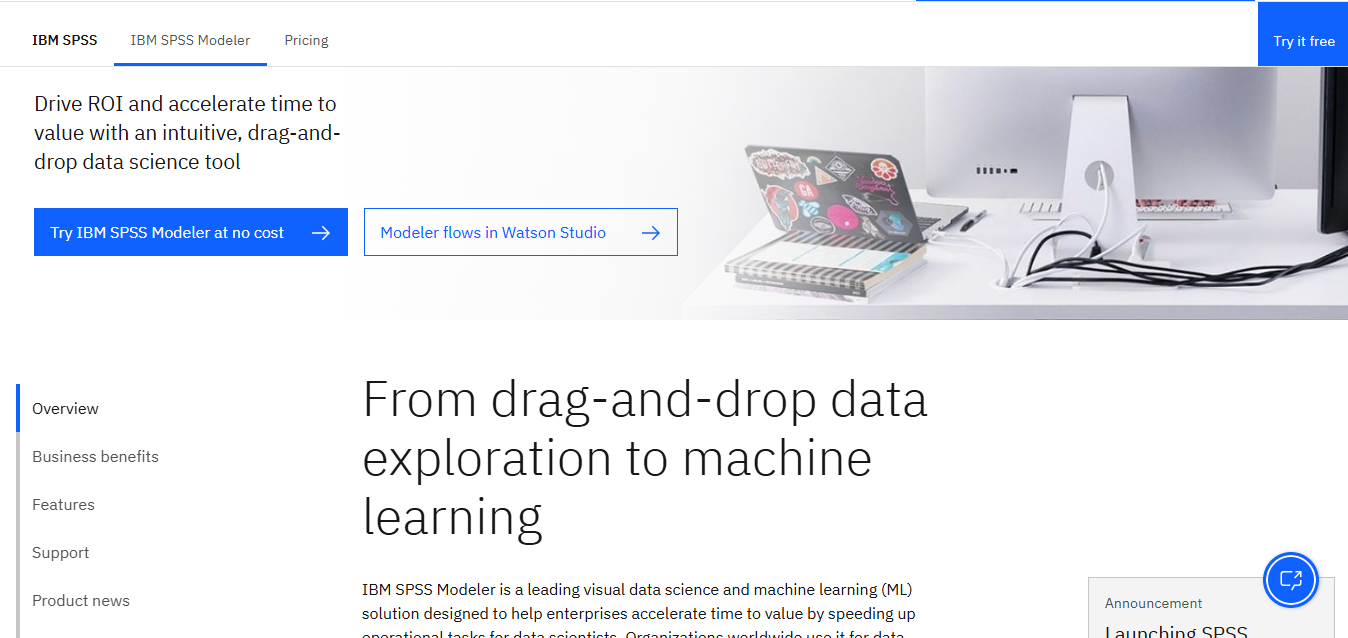
(Image Source: IBM SPSS Modeler)
IBM SPSS Modeler is a versatile tool from a trusted technology company. What makes it special is that it can work with both organized data (like spreadsheets) and messy data (like customer comments or emails).
SPSS helps predict future trends, spot patterns, and find unusual cases that need attention. It has a friendly interface that doesn't require coding skills.
A healthcare provider might use SPSS to predict which patients are at risk for certain conditions based on their medical history and lifestyle factors.
Main features:
Extensions for R and Python
Job scheduling options
Works with many types of data
Smart chart suggestions
Location-based analysis
Pricing:
30-day free trial
Subscription: From $499 per user monthly
Contact for other pricing options
KNIME
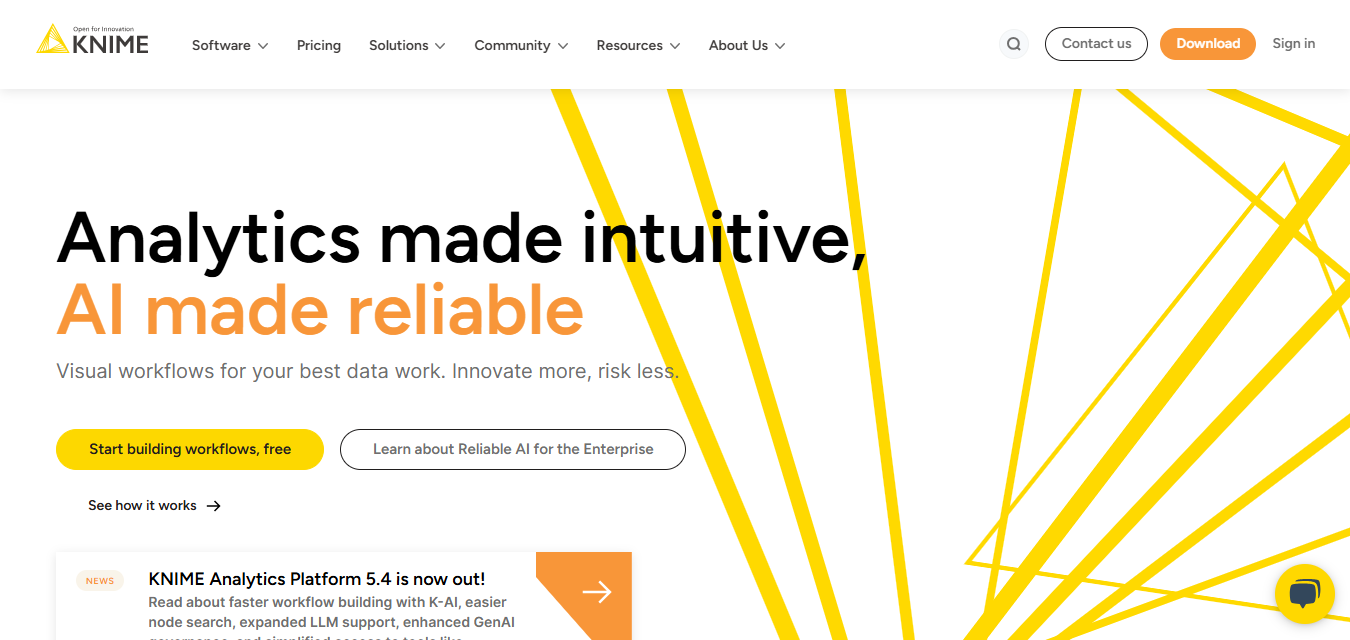
(Image Source: KNIME)
KNIME is a free tool that makes data analysis accessible to everyone. It's like a visual recipe book for data - you connect different steps to create your analysis workflow.
KNIME is used across many industries, from retail to finance to healthcare. Its open-source nature means it's free to use, which makes it popular for businesses just starting with data analysis.
A human resources department might use KNIME to analyze employee performance data and identify factors that lead to success in different roles.
Main features:
Available on Microsoft Azure and Amazon AWS
Creates PDF and PowerPoint reports
Handles multiple data types
Active user community
Simple drag-and-drop design
Pricing:
KNIME Analytics Platform: Free
KNIME Server Small: On AWS or Azure
KNIME Server Medium: $29,000 yearly
KNIME Server Large: $52,000 yearly
Rattle
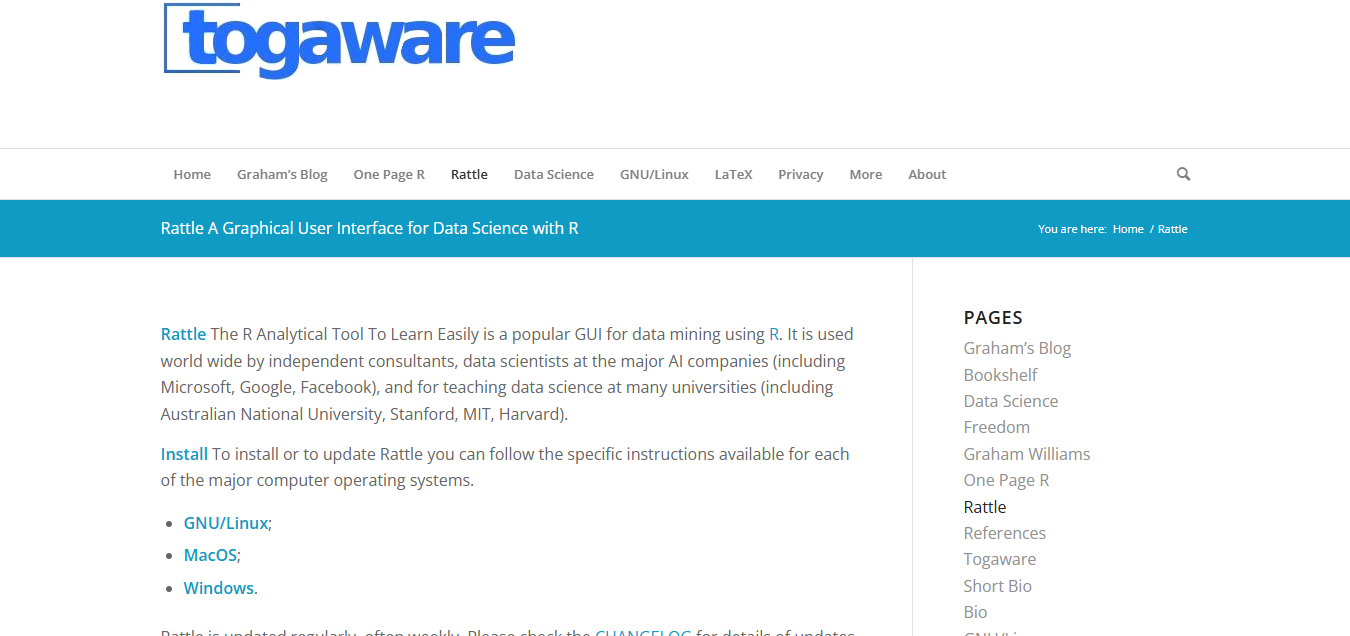
(image Source: Rattle)
Rattle makes the powerful R programming language easy to use through a simple interface. Think of it as training wheels for data science - it helps you learn while still getting results.
What's neat about Rattle is that it shows you the R code for everything you do, helping you learn as you work. It's popular in education and government for this reason.
A research team might use Rattle to analyze survey results and create visualizations that explain their findings clearly.
Main features:
Interactive data visuals
Extra packages available
User-friendly interface
Works on multiple operating systems
Various R packages included
Pricing: Free
WEKA

(Image Source: WEKA)
WEKA is a straightforward tool named after a New Zealand bird. It's designed for machine learning - teaching computers to make predictions based on past data.
WEKA helps with common tasks like classification (putting data into categories), clustering (finding natural groupings), and regression (predicting numeric values). It's widely used in education and research.
A university might use WEKA to help students learn about data mining concepts through hands-on practice.
Main features:
Access to multiple toolboxes
Works on all computing platforms
Good visualization tools
Easy-to-use interface
Connects to SQL databases
Pricing: Free
Apache Mahout

(Image Source: Apache Mahout)
Apache Mahout is a specialized tool for working with very large datasets. It's like a heavy-duty engine for processing massive amounts of information.
Mahout focuses on machine learning algorithms at scale. It's particularly good at three things: recommendation systems (like "customers who bought this also bought"), clustering (finding natural groups in data), and classification (sorting data into categories).
A streaming service might use Mahout to power their recommendation system that suggests new shows based on viewing history.
Main features:
Ready-made algorithms
Matrix and vector libraries
Works with Apache Spark
Runs on distributed systems
Graphic interface
Pricing: Free
Teradata
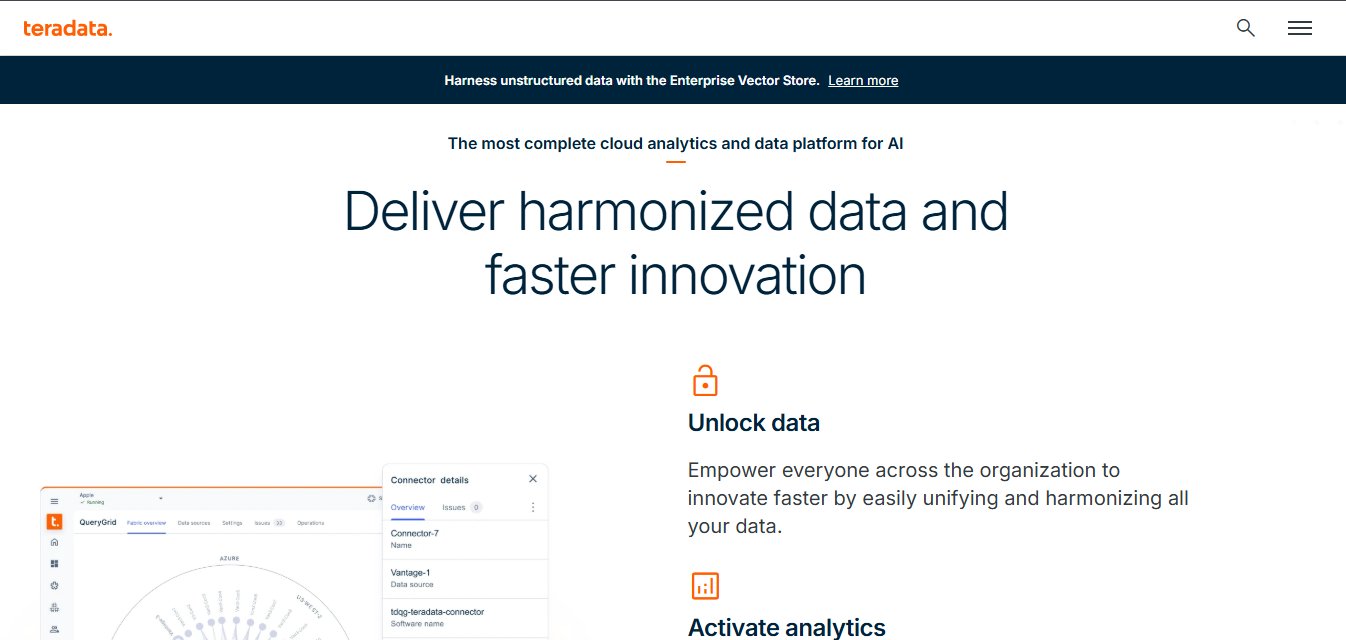
(Image Source: Teradata)
Teradata specializes in managing and analyzing extremely large datasets across multiple cloud platforms. It's like having a powerful engine that can connect to data wherever it lives.
Teradata is used by major companies worldwide for tasks like preventing fraud, managing operations, and understanding customers better. It's designed to be used without coding knowledge.
An airline might use Teradata to analyze flight data, customer feedback, and operational metrics all together to improve their service and efficiency.
Main features:
Handles complex queries
Code and no-code options
Works with all data types
Compatible with many platforms
Available in cloud and on-premises
Easy setup and affordable
Pricing: Based on users, data size, and payment terms
By choosing the right data mining tool, you can turn raw data into valuable insights that help your business grow. Whether you're just starting or looking to upgrade, there's a solution here that can help your business succeed in 2025.
